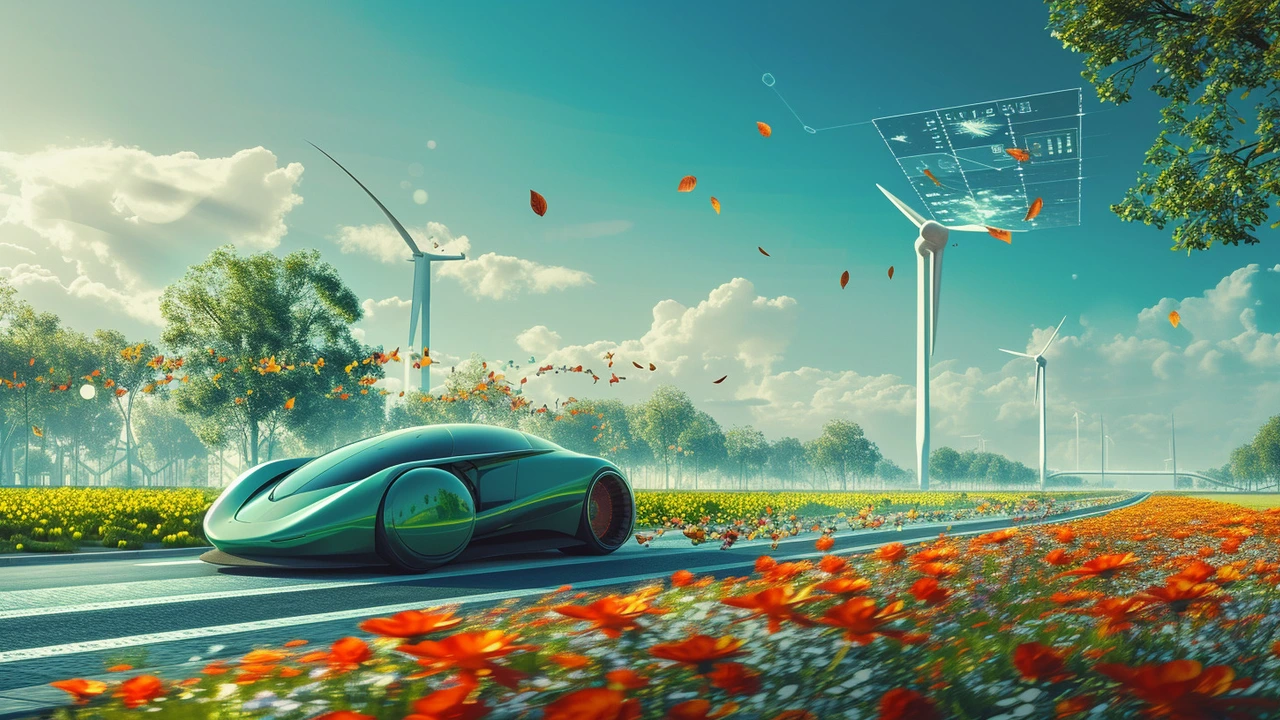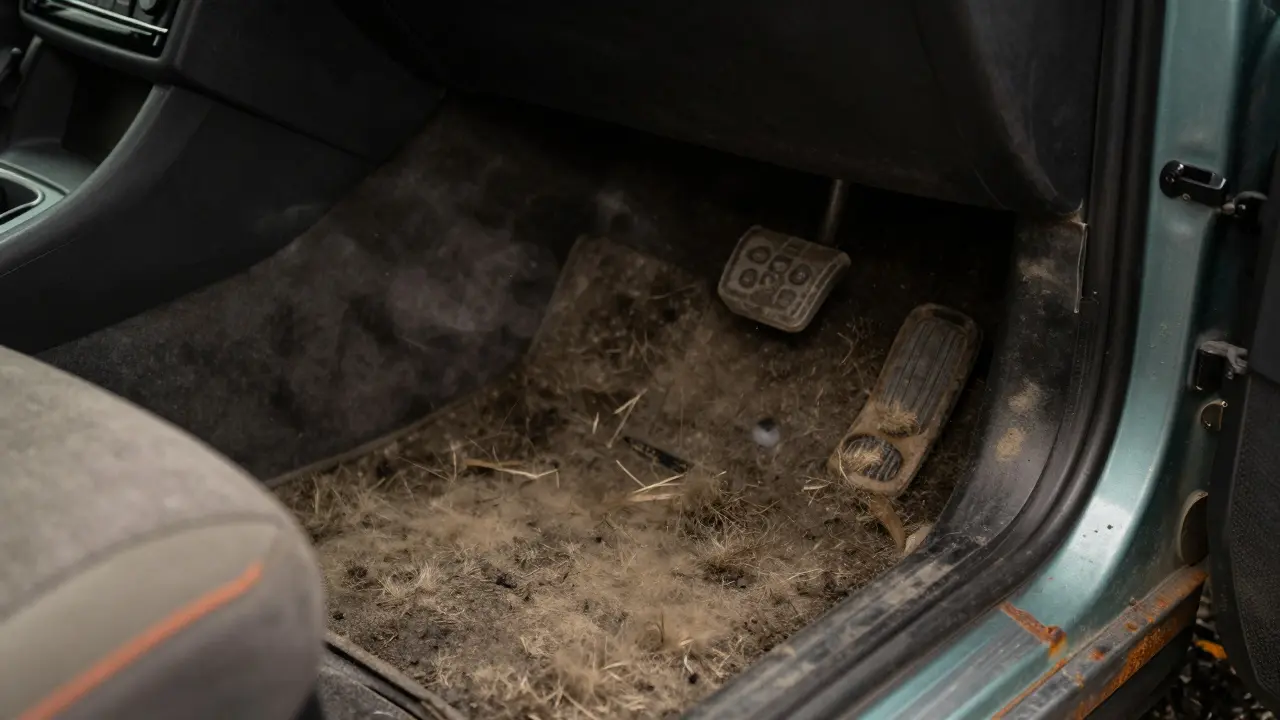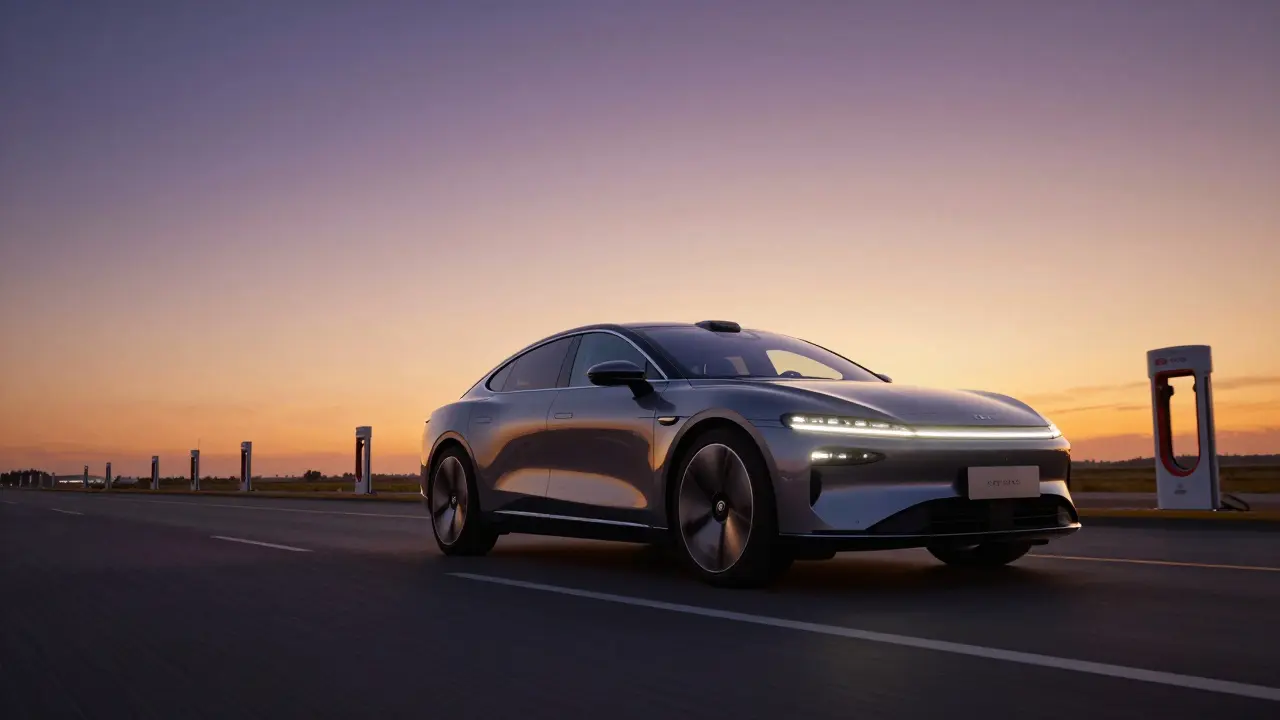Shifting Gears: The Rise of Electric Vehicles
In recent years, electric vehicles (EVs) have surged from a niche market to a driving force in the pursuit of sustainability. A confluence of factors like advancements in battery technology, government incentives, and a growing environmental ethos among consumers has electrified the landscape of transportation. Consider that just a decade ago, finding a charging station was like searching for a needle in a haystack. Today, we're seeing an expansive network of charging points, making EVs as much a practical choice as a principled one. Automakers are pouring billions into EV development, not just for the iconic passenger car but for trucks, buses, and even two-wheelers too. Remember when Tesla was that quirky startup in a sea of giants? Now, it's the pacesetter for an industry in which virtually every major player is electrifying their lineup.
Diving deep into the numbers, it's clear that EVs are more than just a passing trend. Sales have been increasing steadily, representing an ever-growing share of the market. And it's not hard to see why. EVs offer a cleaner alternative to their fossil-fuelled cousins. They promise lower running costs, fewer moving parts (meaning less maintenance), and, crucially, zero tailpipe emissions. As battery costs continue their downward trajectory, that upfront price tag that once caused sticker shock is now within reach for the average buyer. There's a sense that we're on the cusp of a tipping point, where choosing an EV will become the default, not the exception.
Innovative Materials: The Renewable Revolution
Move over steel and plastic, the new kids on the block are renewable materials. It's not just about what's under the hood anymore. Sustainable automotive design is also looking at the 'skin' of our cars. The auto industry is experimenting with everything from bamboo and flax to recycled plastics and bio-fabrics. The benefits are manifold: these materials are often lighter (contributing to increased energy efficiency), they reduce reliance on petroleum-based products, and they up the ante in terms of vehicle recyclability at the end of life. These aren't just concepts for car shows, either. Real-world applications are hitting the market, with manufacturers looking to appeal to the environmentally conscious consumer.
It's a fascinating shift in approach. I'm struck by the innovative use of these materials not just for their environmental clout but also for their aesthetic and performance benefits. Promising developments in the field include 'vegan leather' produced from mushrooms or apples, offering a tactile and sustainable alternative to traditional upholstery. And then there's the use of carbon fiber reinforced with plant fibers, combining strength with reduced weight. Each innovation is a step towards a future where our vehicles are not just tools for transport, but exemplars of sustainability.
Smart Technology: Reducing Our Footprint
The digital revolution has not left the automotive world behind. If anything, it's given the green movement a turbo boost. Smart technology in vehicles isn't only about touchscreen interfaces or voice commands; it's playing a crucial role in reducing the environmental impact of driving. Consider the integration of GPS with real-time traffic data. By optimizing our routes, we're not only saving time but fuel as well. Or take the development of autonomous vehicles. When we reach a point where cars can drive themselves, we're looking at a future with fewer accidents, less traffic congestion, and a decrease in unnecessary fuel consumption. Imagine a world where cars are part of an interconnected system, communicating with one another to optimize traffic flow and reduce emissions.
What's more, smart tech helps in the maintenance of vehicles, ensuring they run at peak efficiency. Advanced diagnostics can predict when parts are likely to fail or need servicing, leading to less wasteful usage of resources. It's fascinating to think about how technology that seems so cutting-edge today will, in the not-too-distant future, be regarded as standard equipment that helps our vehicles tread more lightly on the planet. Technology is no longer just about adding features; it's about integrating systems for the good of the environment.
Hybrid Synergy: The Best of Both Worlds
While electric vehicles steal the spotlight, let's not forget about their pragmatic cousins: hybrids. These dual-source machines harness both internal combustion engines and electric motors to optimize efficiency. Particularly for those of us living in areas where charging infrastructure is still catching up, hybrids offer a bridge between fossil fuels and the battery-powered future. And with plug-in hybrids, you can enjoy short-range electric driving for daily commutes, reserving petroleum power for longer trips without the range anxiety that may come with full EVs.
It's a cunning balance of present needs and future aspirations. Hybrids have been pivotal in preparing the market and the mindset for fully electric transportation. They provide a practical stepping stone, enabling users to adapt to electric mobility while still enjoying the reassurance of a traditional engine. And hybrids have their own innovations too – from energy regeneration during braking to sophisticated energy management systems that ensure optimal use of both power sources. They may not grab the headlines like pure EVs, but hybrids are quietly doing their part in the green revolution.
Renewable Energy on the Go: Solar-Powered Advances
As we look to cleanse our driving habits, it's not just about the cars themselves; it's about where their energy comes from. Enter solar power, the poster child of renewable energy. Integrating solar technology into automobiles might have seemed like a pipe dream in the past, but now it's becoming an attainable reality. Some vehicles come with solar roof panels to aid in charging the battery, reducing reliance on the grid and tapping into that ever-present (at least during the day) energy source in the sky. And we're not talking about weak trickle-charging; new advancements are making these solar aids significantly more potent.
This is a crucial piece of the puzzle. If our electric vehicles are running on coal-generated power, we're not realizing their full environmental potential. However, when we charge them with solar energy, we're driving down that road to sustainability with a much cleaner conscience. It's a thrilling time, watching this synergy between automotive and renewable energy tech unfold, leading us to a point where solar power could potentially provide a substantial portion of a vehicle's power needs.
Charging Ahead: The Evolution of Infrastructure
Having spoken about the vehicles and the tech powering them, we can't ignore the backbone that makes it all possible: infrastructure. Charging stations are sprouting up faster than we can count them. Governments and private companies alike are investing heavily in building networks that make electric travel as convenient as pulling into a gas station is today. And it's not just the number of stations that's impressive; it's the speed at which they can charge.
Ultra-fast charging tech is shifting gears, reducing waiting times from hours to mere minutes. Add to that the advent of wireless, inductive charging where you simply park your car over a charging pad, and you've got the recipe for a radical overhaul of how we 'fuel' our vehicles. With these improvements, the question of





